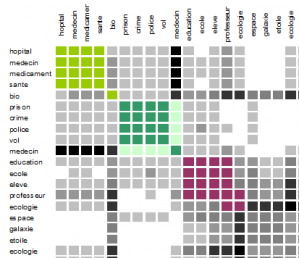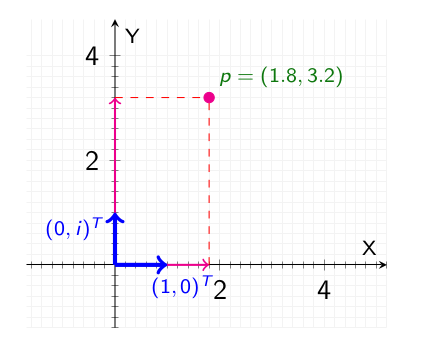5: Dimensional Analysis by Co-Occurrence
1/29
There's no tags or description
Looks like no tags are added yet.
Name | Mastery | Learn | Test | Matching | Spaced |
|---|
No study sessions yet.
30 Terms
Latent Semantic Analysis
A technique of identifying association amongst words in a document - often used for natural language processing.
Removes the requirement of a square matrix that exists in PCA
Instead adds the requirement for co-occurrence of events
Occurrence Matrix
Describes how frequent different terms happen in each document

Terms
Events.
Documents
Random variables.
One-Mode Factor Analysis
Every value in the matrix represents the same type of variable (i.e. they’re all co-variances of the variables).
Requirement for covariance to be a good estimator of relations
All variables are unimodal or roughly centred.
Unimodality (of a variable)
There is one single highest value.
Reason to use LSA
It’s another way of looking at relations between variables, specifically co-occurrence of events - central tendency is not generally relevant with multi-model distributions.
Covariance Matrix Format
Where:
m is the set of random variables
n is the number of dimensions (rows)

Covariance Matrix - Columns
A vector detailing how relevant the given document (dj) is to each event.
Covariance Matrix - Rows
A vector corresponding to a term (ti) and how related it is to each document (random variable).
Argand Basis
A coordinate basis used to represent complex numbers.

Complex Conjugate
A number with an imaginary part equal in magnitude but opposite in sign - i.e. z = a + bi and z* = a - bi
Complex Conjugate Properties
The product of a complex number and its conjugate is a real number: a2 + b2
Conjugation is distributive over four main operations for any two complex numbers.
Conjugation does not change the modulus of a complex number - |z*| = |z|
(z*)* = z
Conjugation is commutative for a power, i.e. (zn)* = (z*)n
Complex Conjugate Operation - Addition
(z + w)* = z* + w*
Complex Conjugate Operation - Subtraction
(z - w)* = z* - w*
Complex Conjugate Operation - Multiplication
(zw)* = z*w*
Complex Conjugate Operation - Division
(x / w)* = z* / w*, w ≠ 0
Complex Conjugate Application
De-rotation - rotating a vector by 1 + i will rotate it by 45 degrees, which can reversed with 1 - i (the complex conjugate).
Conjugate Transpose Matrix
Transposing a matrix and applying the complex conjugate to each item within.

Inverse Matrix
A matrix where AA-1 = A-1A = I
Cofactor Matrix
The minor of an element in a matrix (Mij) being multiplied by (-1)i+j.

Adjoint Matrix
The transposed cofactor matrix - adj(A) = cof(A)T.
Calculating the Inverse Matrix
Calculating the adjoint matrix.
Lanczos Algorithm
An iterative method to find the m “most useful” eigenvalues and eigenvectors of a Hermitian matrix, where m is often but not necessarily much smaller than n.
Lanczos Algorithm - Properties
Efiicient but numerically unstable.
One-Sided Jacobi Algorithm
An iterative algorithm where matrix A is iteratively transformed into a matrix with orthogonal columns: Anew ← AoldJ(p, q, O) with J(p, q, O) being a rotation matrix.
Two-Sided Jacobi Algorithm
An iterative algorithm that generalises the Jacobi eigenvalue algorithm, where Anew ← JTG(p, q, O)AoldJ
G(p, q, O) is the Givens rotation matrix
J is the Jacobi rotation matrix
Rank
The number of columns of a matrix.
Latent Semantic Analysis as Singular Value Decomposition
